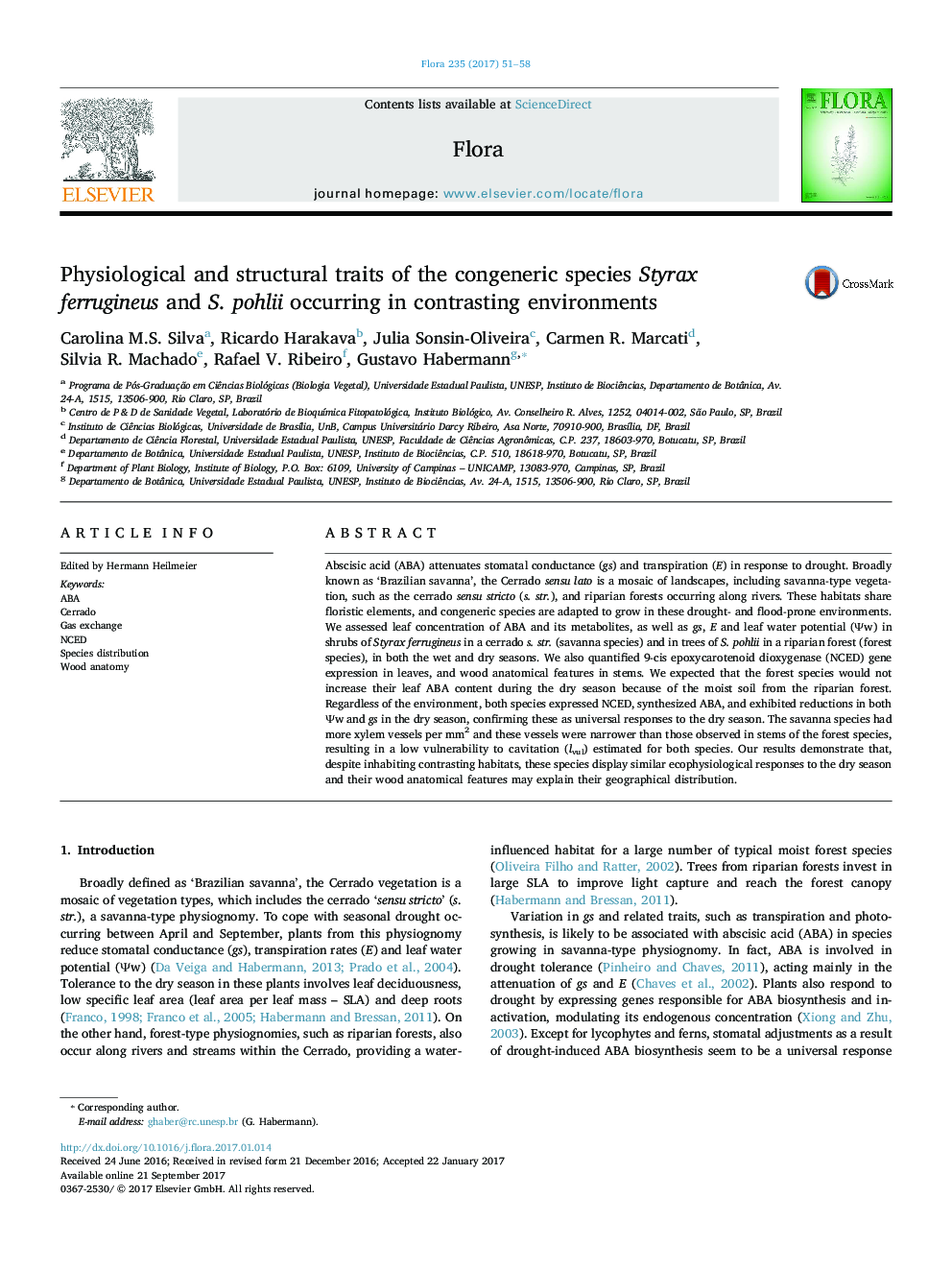| کد مقاله | کد نشریه | سال انتشار | مقاله انگلیسی | نسخه تمام متن |
|---|---|---|---|---|
| 5532302 | 1549924 | 2017 | 8 صفحه PDF | دانلود رایگان |

- Styrax ferrugineus and S. pohlii are savanna and forest species, respectively.
- Regardless of the habitat, these plants show universal responses to the dry season.
- Both species synthesize ABA and reduce Ψw and gs in the dry season.
- The savanna species shows more xylem vessels per mm2 than the forest species.
- Physiological responses and wood anatomy explain their geographical distribution.
Abscisic acid (ABA) attenuates stomatal conductance (gs) and transpiration (E) in response to drought. Broadly known as 'Brazilian savanna', the Cerrado sensu lato is a mosaic of landscapes, including savanna-type vegetation, such as the cerrado sensu stricto (s. str.), and riparian forests occurring along rivers. These habitats share floristic elements, and congeneric species are adapted to grow in these drought- and flood-prone environments. We assessed leaf concentration of ABA and its metabolites, as well as gs, E and leaf water potential (Ψw) in shrubs of Styrax ferrugineus in a cerrado s. str. (savanna species) and in trees of S. pohlii in a riparian forest (forest species), in both the wet and dry seasons. We also quantified 9-cis epoxycarotenoid dioxygenase (NCED) gene expression in leaves, and wood anatomical features in stems. We expected that the forest species would not increase their leaf ABA content during the dry season because of the moist soil from the riparian forest. Regardless of the environment, both species expressed NCED, synthesized ABA, and exhibited reductions in both Ψw and gs in the dry season, confirming these as universal responses to the dry season. The savanna species had more xylem vessels per mm2 and these vessels were narrower than those observed in stems of the forest species, resulting in a low vulnerability to cavitation (lvul) estimated for both species. Our results demonstrate that, despite inhabiting contrasting habitats, these species display similar ecophysiological responses to the dry season and their wood anatomical features may explain their geographical distribution.
Journal: Flora - Volume 235, October 2017, Pages 51-58